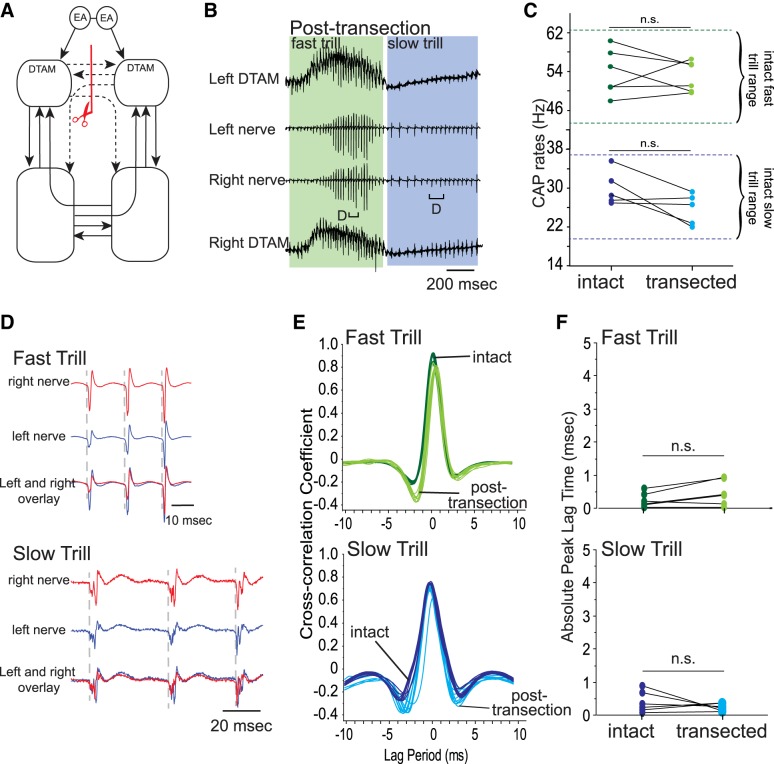Fig. 4.
Effects of sagitally transecting anterior commissure alone on fictive advertisement calls. A: diagram of the vocal pathways showing the transection in red line with scissors, transected projections in dotted arrows, and intact projections in solid arrows. B: example of the bilateral DTAM LFP (top and bottom) and laryngeal nerve recordings (middle 2) obtained during a fictive advertisement call from a brain after anterior commissure sagittal transection. Green and blue frames indicate fast and slow trills, respectively. Brackets with D are enlarged in D. C: mean fast and slow trill rates before and after transection from 6 brains. Points connected by a line indicate mean fast and slow rate of 1 animal. Pairs of dotted green and blue lines indicate the range of fast and slow trill rates, respectively, obtained from intact brains. D: enlarged sections of brackets labeled in B. Left (blue) and right (red) nerve recordings are shown during fast and slow trills with the overlay of the 2 nerve activity at the bottom. E: example of cross-correlation between the left and right nerve recordings for fast and slow trills before and after transection. F: absolute peak lag time before and after transection, plotted for each animal as in C.

